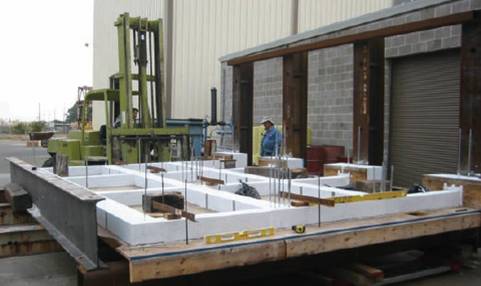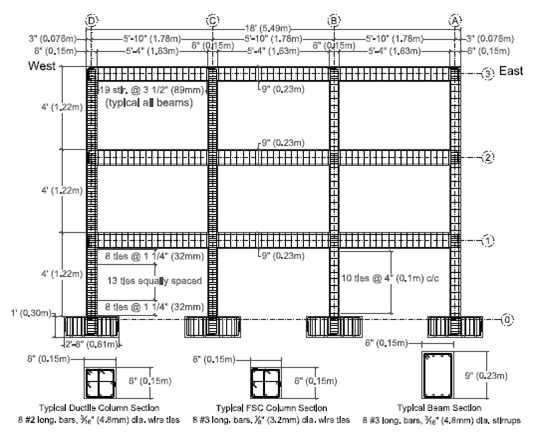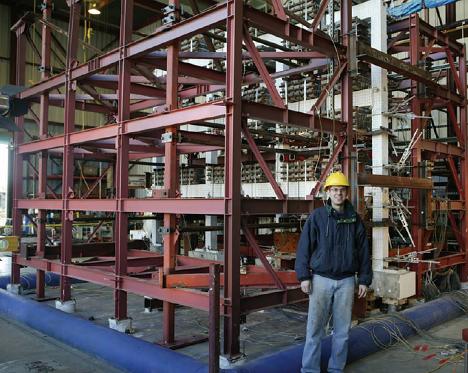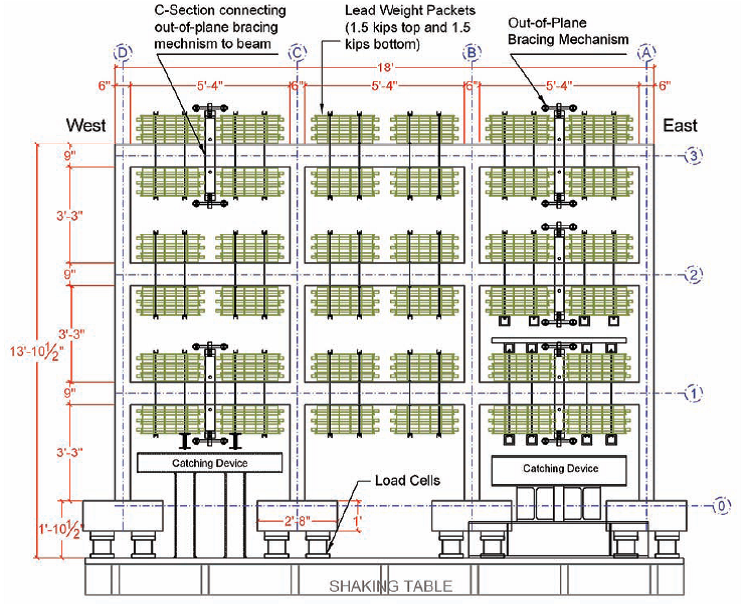Shake Table Tests: Berkeley
 Prof. Ghannoum (currently at the University of Texas Austin) performed a series of strong motions tests on a third-scale planar reinforced concrete frame that contained non-seismically detailed columns at the University of California (Berkeley) with Prof. Moehle.
Prof. Ghannoum (currently at the University of Texas Austin) performed a series of strong motions tests on a third-scale planar reinforced concrete frame that contained non-seismically detailed columns at the University of California (Berkeley) with Prof. Moehle.
The frame was tested to complete loss of axial capacity in critical columns. The data derived from these tests were used to calibrate fiber-section frame-element analytical models. The resulting analytical models allowed the reproduction of test frame behavior with high accuracy up to shear failure in critical columns. The developed analytical simulation models were equally accurate for ductile and non-ductile columns of the test frame.
 Since these models were developed using a limited experimental dataset, validation is necessary to demonstrate their efficacy. The proposed experimental work will allow for that.
Since these models were developed using a limited experimental dataset, validation is necessary to demonstrate their efficacy. The proposed experimental work will allow for that.
State-of-the-art shear and axial failure models for non-ductile RC columns were used to estimate the failure behavior of frame critical columns. This exercise showed that test frame non-ductile columns had significantly
 more lateral deformation capacities than anticipated by behavioral models. Likewise the flexural capacity of these columns was found to be significantly higher than that predicted by classical beam theory (about 25% higher). The higher flexural capacity of test frame columns
was traced back to measured high strain rates in longitudinal bars. Considering that available shear and axial failure models were derived from quasi-static tests, it is hypothesized that strain rates can significantly affect shear failure and axial collapse behavior of non-ductile reinforced concrete columns. This hypothesis will be verified in the proposed work by comparing results of quasi-static and high velocity real time tests.
more lateral deformation capacities than anticipated by behavioral models. Likewise the flexural capacity of these columns was found to be significantly higher than that predicted by classical beam theory (about 25% higher). The higher flexural capacity of test frame columns
was traced back to measured high strain rates in longitudinal bars. Considering that available shear and axial failure models were derived from quasi-static tests, it is hypothesized that strain rates can significantly affect shear failure and axial collapse behavior of non-ductile reinforced concrete columns. This hypothesis will be verified in the proposed work by comparing results of quasi-static and high velocity real time tests.





